Chapter 6: Work, Energy, and Energy Resources - Review Terms
1/32
There's no tags or description
Looks like no tags are added yet.
Name | Mastery | Learn | Test | Matching | Spaced |
|---|
No study sessions yet.
33 Terms
Work (Scientific Definition)
The product of the component of the force in the direction of motion times the distance through which the force acts.
Positive Work
Occurs when the force has a component in the direction of the displacement, resulting in energy transfer to the object.
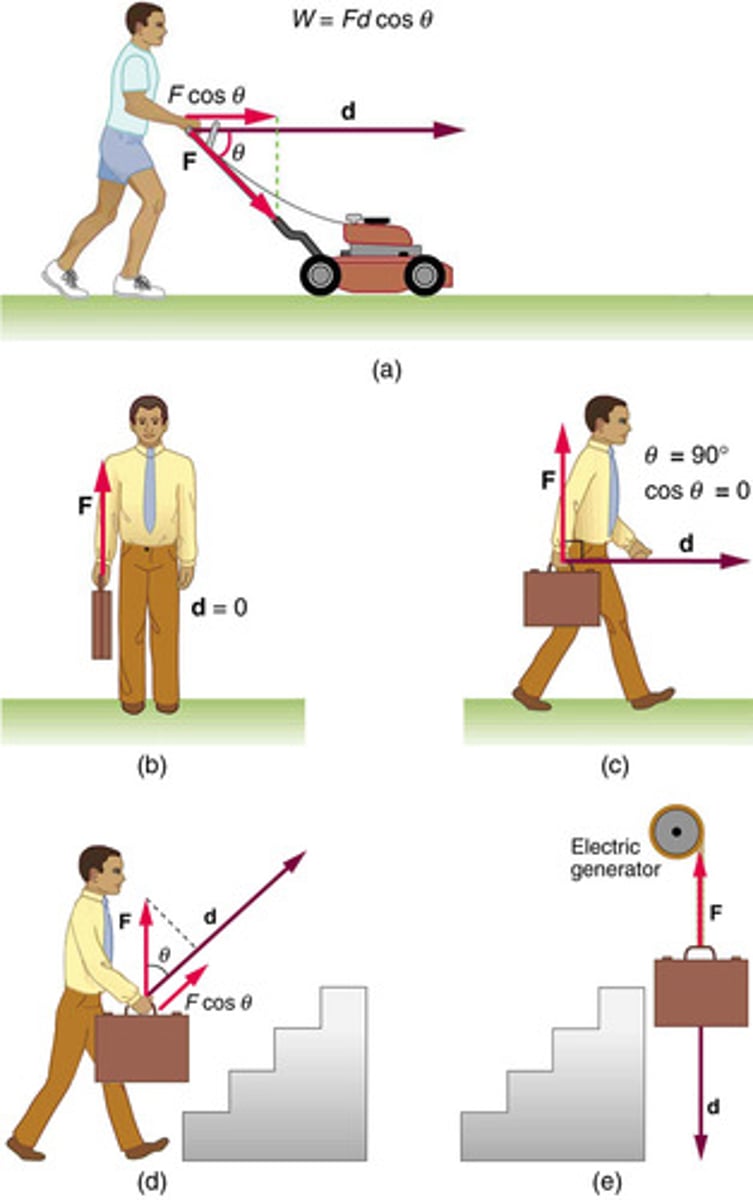
Negative Work
Occurs when the force has a component opposite to the direction of displacement, resulting in energy being removed from the object.
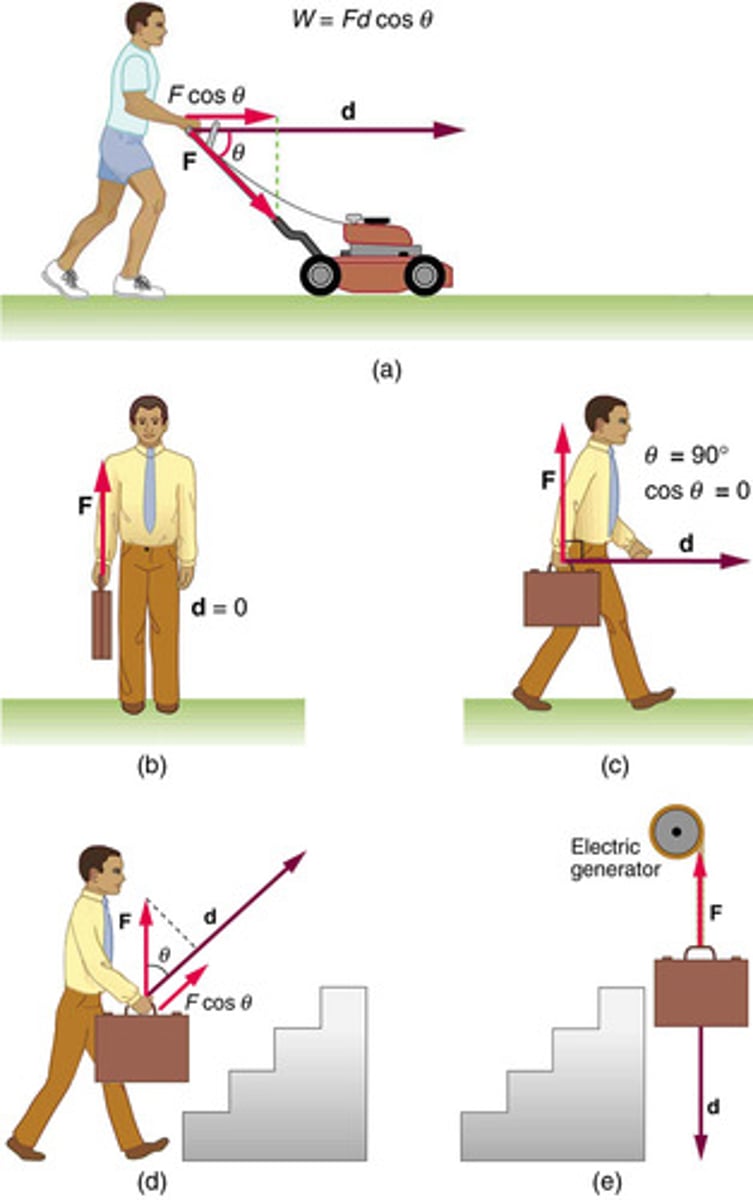
Zero Work
Occurs when the force is perpendicular to the displacement, resulting in no energy transfer.
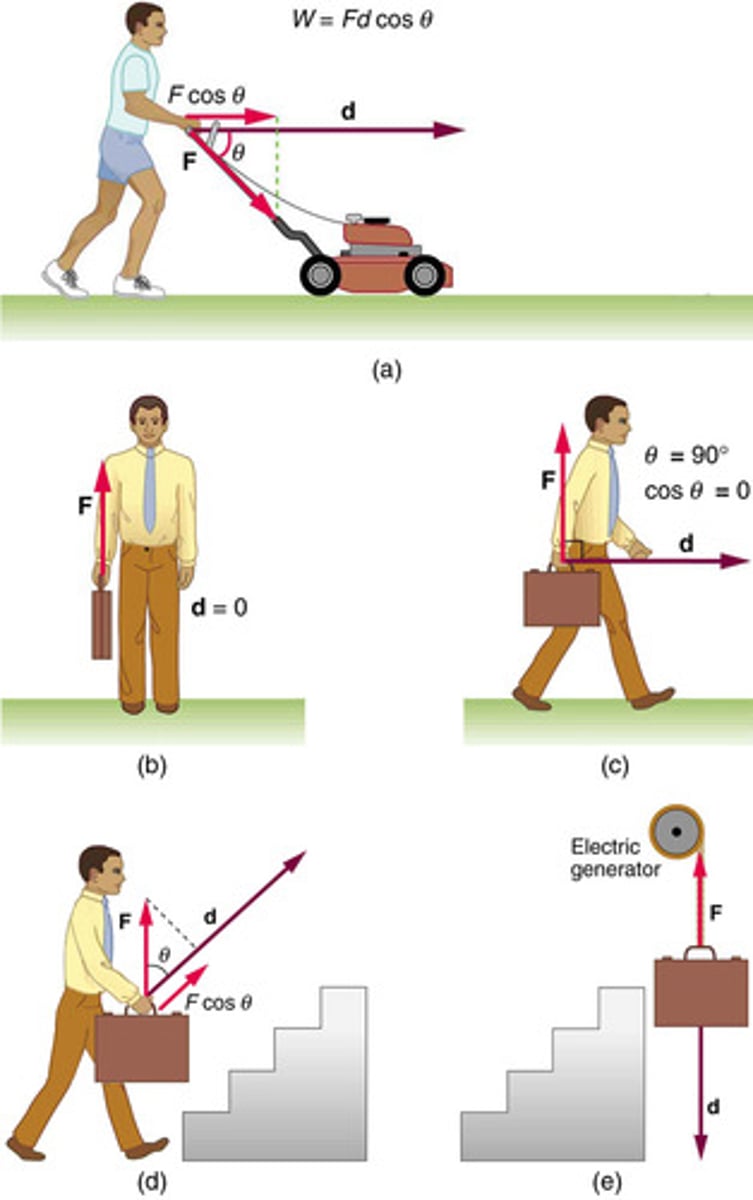
Joule (J)
The SI unit of work or energy, equivalent to one newton-meter.
Equation for Work
W = Fd cos θ, where W is work, F is the magnitude of the force, d is the displacement, and θ is the angle between the force and displacement vectors.
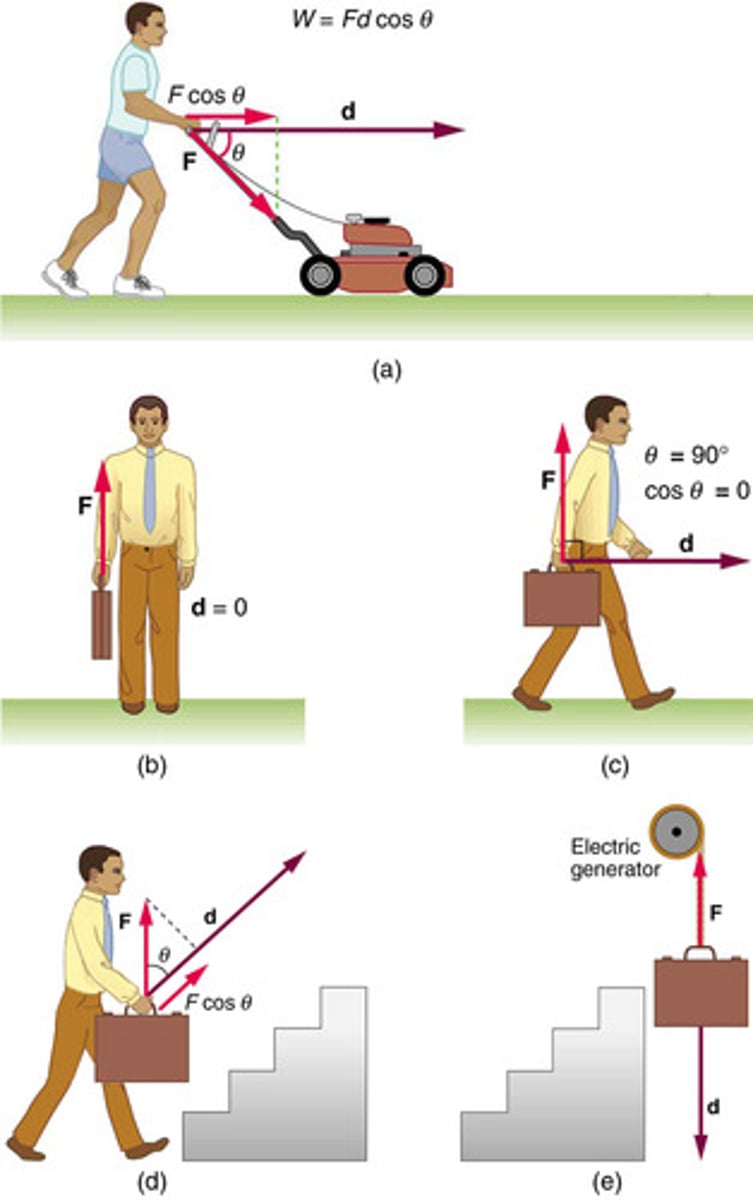
Net Work
Net work is the sum of all work done on an object by all forces. It can be expressed as W_net = F_net d cos(θ), where F_net is the net force, d is the displacement, and θ is the angle between the force and displacement vectors.

Work-Energy Theorem
The work-energy theorem states that the net work done on a system is equal to the change in its kinetic energy, expressed as W_net = 1/2 mv^2 - 1/2 mv_0^2.
Kinetic Energy
Kinetic energy is the energy associated with the motion of an object. It is given by the equation KE = 1/2 mv^2, where m is the mass and v is the velocity of the object.
Force-Displacement Graph
A force-displacement graph plots force against displacement. The area under the curve represents the work done by the force.

Constant Force
A constant force is a force that does not change in magnitude or direction over the distance it acts. The work done by a constant force is calculated as W = Fd cos(θ).
Gravitational Potential Energy
The energy stored in an object due to its position relative to a gravitational source, calculated as PEg = mgh.
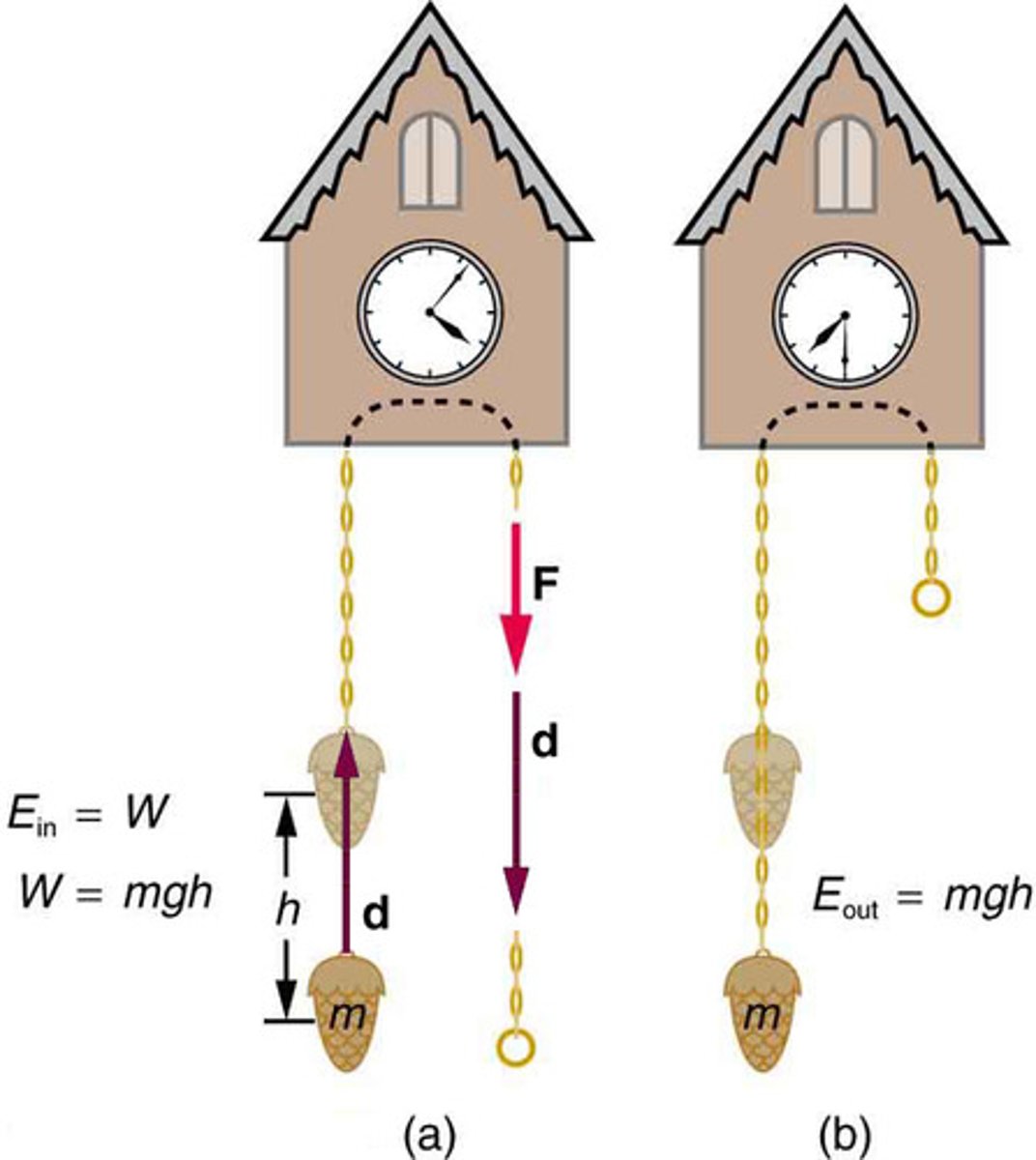
Work Done Against Gravity
The work required to move an object against the gravitational force, resulting in an increase in gravitational potential energy.
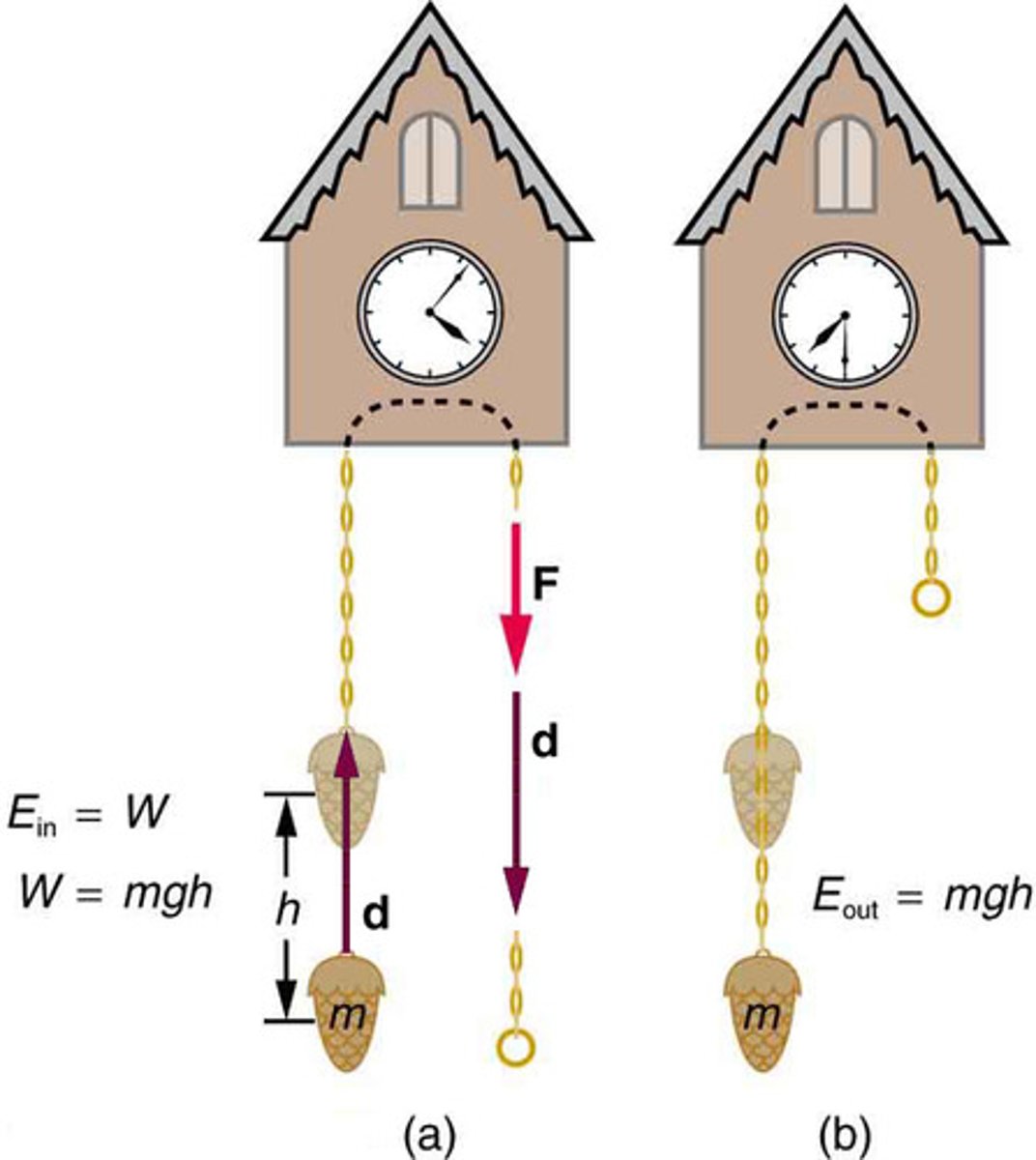
PEg = mgh
The formula for gravitational potential energy, where PEg is the potential energy, m is the mass, g is the acceleration due to gravity, and h is the height above a reference point.
Reference Level
An arbitrary level where gravitational potential energy is set to zero, used to measure differences in potential energy.
Change in Gravitational Potential Energy (ΔPEg)
The difference in gravitational potential energy between two positions, calculated as ΔPEg = mgh.
Conservation of Energy
The principle that energy cannot be created or destroyed, only transformed from one form to another, such as from potential to kinetic energy.
Conservative Force
A force for which work done by or against it depends only on the starting and ending points of a motion and not on the path taken.
Potential Energy (PE)
The energy a system has due to position, shape, or configuration, which is stored and completely recoverable.
Mechanical Energy
The sum of kinetic energy and potential energy in a system, which remains constant when only conservative forces are acting.
Potential Energy of a Spring (PEs)
The energy stored in a spring, calculated as PEs = 1/2 kx^2, where k is the spring constant and x is the displacement from its undeformed position.

Conservation of Mechanical Energy
In a system with only conservative forces, the total kinetic and potential energy remains constant, expressed as KE + PE = constant.

Elastic Potential Energy
Potential energy stored in elastic materials as the result of their stretching or compressing, such as in springs or rubber bands.
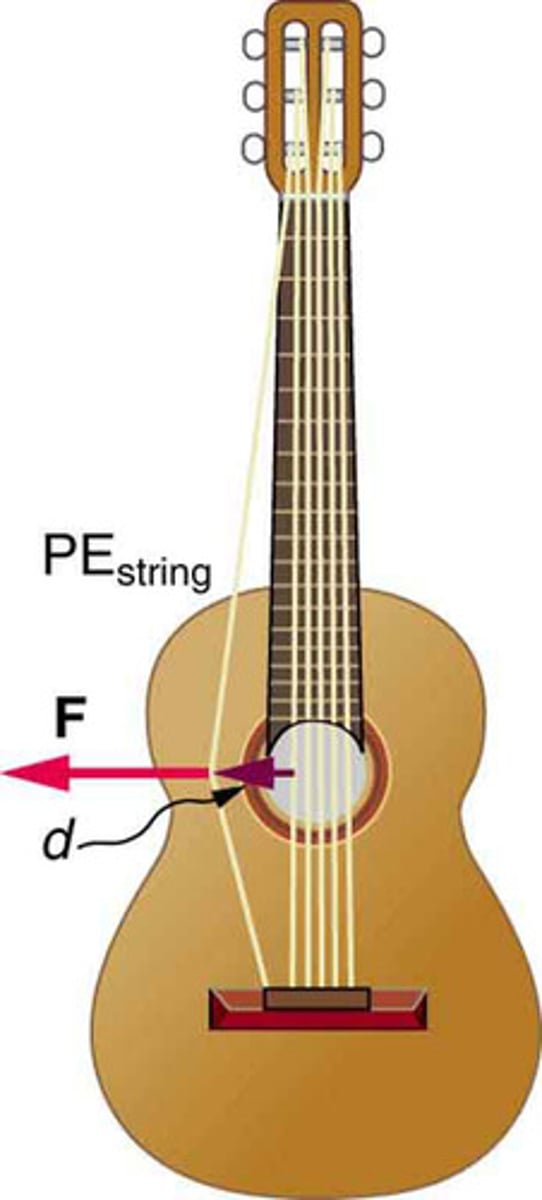
Nonconservative Force
A force for which work depends on the path taken, such as friction, which adds or removes mechanical energy from a system.
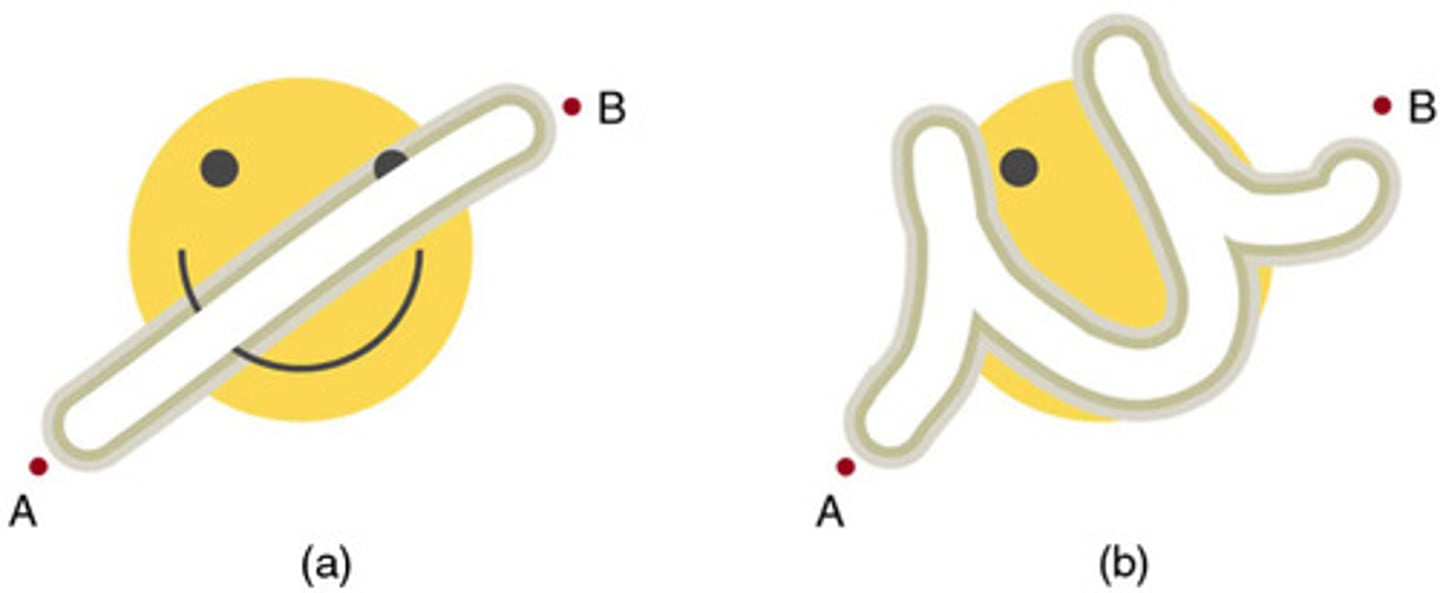
Law of Conservation of Energy
Total energy is constant in any process. It may change in form or be transferred from one system to another, but the total remains the same.
Work-Energy Theorem
States that the net work done on a system equals the change in its kinetic energy, including work by both conservative and nonconservative forces.
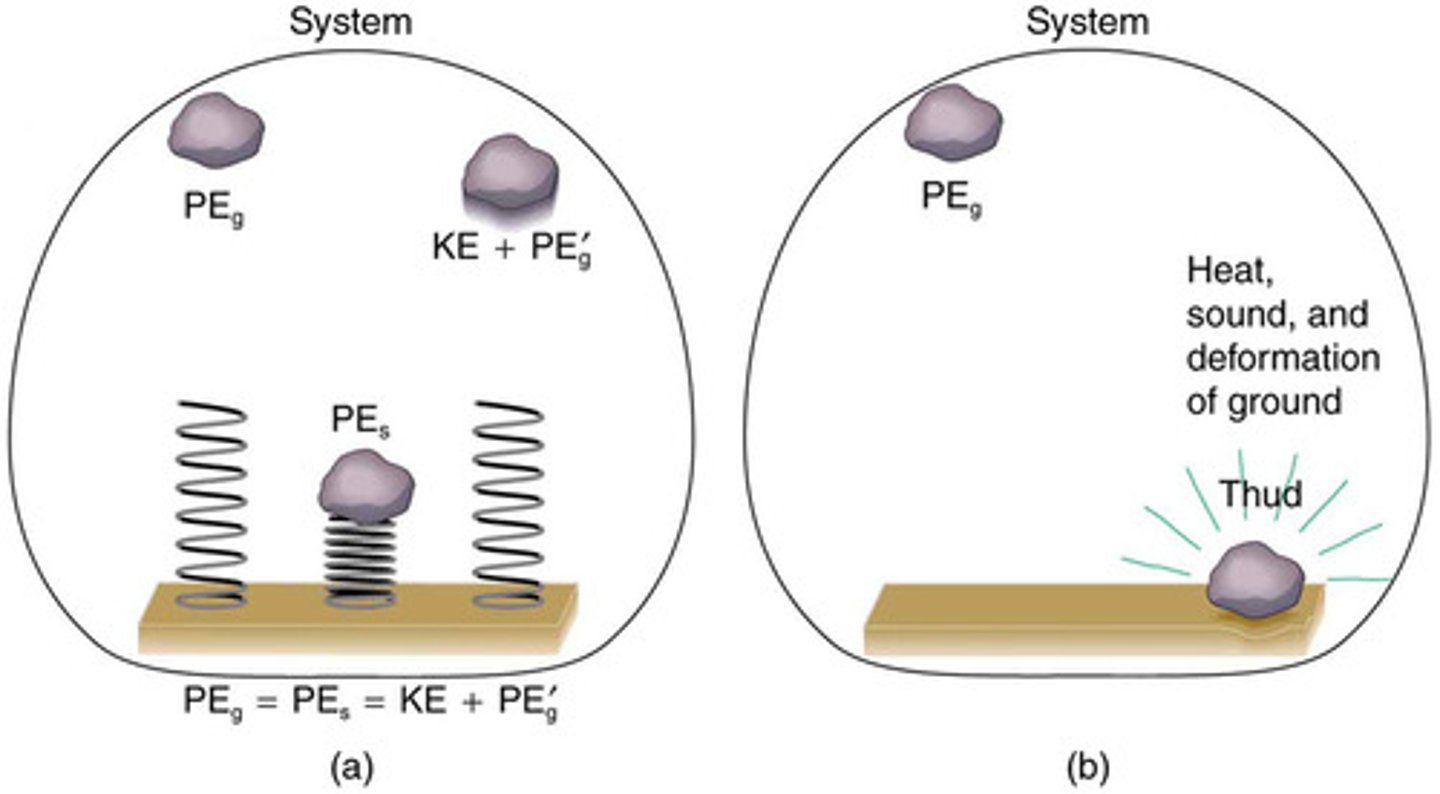
Efficiency
The fraction of energy input that is converted to useful energy or work, rather than being transformed into less useful forms like thermal energy.
Power
Power is the rate at which work is done or energy is expended.

Energy Consumption
The amount of energy used by an appliance, calculated as the product of power consumption rate and time used.
Global Warming
The long-term rise in the average temperature of the Earth's climate system, often linked to fossil fuel use.
Conservative Forces
Forces that have an associated potential energy and do not dissipate mechanical energy from a system.
Mechanical Energy
The sum of kinetic energy (KE) and potential energy (PE) in a system.
Work-Energy Theorem
States that the net work done by all forces acting on a system equals its change in kinetic energy.